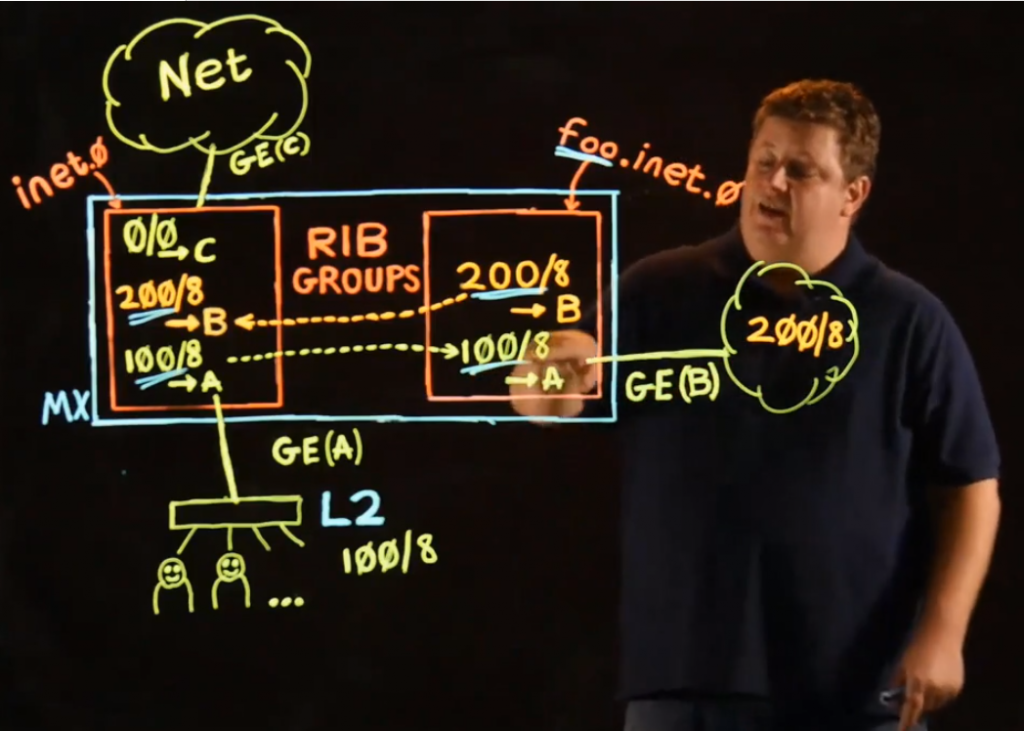Static Routing – very similar to IOS. Terminology is a little different, in IOS world we call it administrative distance (of one in static routing), whereas with Junos it’s preference 5. Either platform the only thing that takes precendence on routes is a directly connected interface.
Route Preferences are different in Juniper (Why fix it when it’s not broken I do not know but here we are):
| Source of Route | Junos Pref | IOS AD |
| Direct | 0 | 0 |
| Local | 0 | 0 |
| Static | 5 | 1 |
| OSPF Int | 10 | 110 |
| RIP | 100 | 120 |
| OSPF Ext | 150 | 110 |
| BGP | 170 | e170 / i200 |
Static Route, saying traffic going towards 200.200.200.1/32 should be routed via 30.30.0.100 (the next hop in this imagined scenario):
user@junosDevice# configure user@junosDevice# edit routing-options static [edit routing-options static] user@junosDevice# set route 200.200.200.1/32 next-hop 30.30.0.100 user@junosDevice# commmit
Recursive Resolution of Static Next Hops
When trying to reach a remote interface that isn’t directly connected you need to include the resolve keyword to utilise recursive resolution (where you would not need to with something like IOS, in which it’s in the default behaviour)
Preventing Accidental Redistribution/Readvertisement of Statics
You can make sure your static routes aren’t readvertised with a keyword added to your static route configuration. (Stops you accidentally advertising out a static route that ends up with loads of traffic flowing through your router when you don’t want it to).
Virtual routers / routing instances are used in Juniper – one use is so that different vlans can reach different routing instances, and as such have different routing tables apply to them. We can then logically route packets through these virtual routers ( LT-0/0/0.0 if on the same box) or physcially route them if seperate.
Each Logical interface belongs to a single routing instance.
Copy Routing Between Tables (RIB-Groups)
There are different ways to copy routing between virutal routers routing tables in Junos. One way is useing RIB-groups. Traffic that has arrived in one routing instance can be routed out of a logical interface belonging to another instance.
